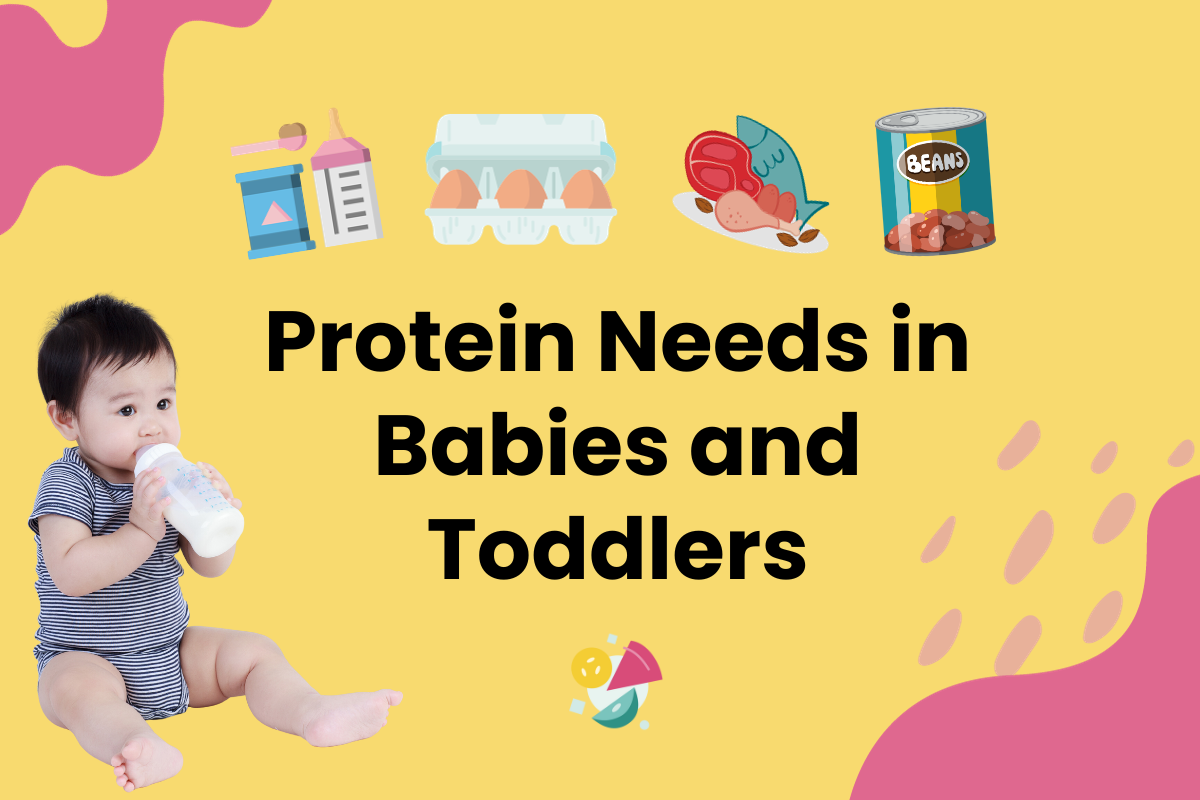Protein Needs in Babies and Toddlers
🔍 Introduction
As parents, we strive to provide our little ones with the best nutrition for their growth and development. When it comes to protein, there are some important considerations to keep in mind for infants and toddlers. In this article, we will explore the protein needs of babies, the role of breastmilk and formula, the potential risks of excessive protein intake, and the natural changes in protein consumption as toddlers grow.
Babies and Toddlers Need Very Little Protein
Contrary to popular belief, babies and toddlers have relatively low protein requirements compared to adults.
“According to British Nutrition Foundations, children between 1 and 3 years need about 14.5 grams of protein per day. ”
These amounts may seem small, but they are appropriate for their size and developmental needs.
Meeting Protein Needs with Breastmilk, Formula, and Cow's Milk
🍼 During the first year of life, the primary sources of protein for infants are breastmilk or formula.
Breast milk is specifically tailored to meet the nutritional needs of infants and provides the perfect balance of protein, carbohydrates, and fats. The formula also contains an appropriate amount of protein necessary for healthy growth and development.
🥛After the age of 12 months cow's milk or its nutritional alternatives become a significant source of protein for toddlers.
One cup (8 ounces) of cow's milk or a nutritional alternative, such as soy or pea protein milk, provides approximately 8 grams of protein. However, it is important to note that cow's milk should not be introduced as a main drink before 12 months of age, as it may interfere with the absorption of important nutrients.
⚠️Potential Risks of Excessive Protein Intake
While protein is essential for growth, an excessive focus on protein intake during the first two years of life can lead to potential risks. Research suggests that a high protein intake in early childhood is associated with a risk of weight dysregulations later in life. Additionally, overly controlling feeding practices related to protein can interfere with a child's natural ability to self-regulate their food intake, leading to an increased risk of feeding problems and negative mealtime experiences.
💫 Natural Changes in Protein Consumption
👦🏽 As toddlers grow and their dietary needs change, it is common for them to naturally scale down their protein consumption. This is because toddlers require approximately ten times more calories from carbohydrates than from protein. Their energy needs increase, and they rely more on carbohydrates and fats for fuel. It is important to offer a variety of nutrient-dense foods that provide a balance of carbohydrates, proteins, and healthy fats to support their overall growth and development.
Furthermore, it is worth mentioning that many children experience a natural disgust response to meat during the second and third years of their lives. This is a normal phase, and it is not uncommon for toddlers to find the texture of meat challenging to manage. It is essential to respect their preferences and offer alternative protein sources, such as legumes, eggs, and dairy products, to ensure they still receive adequate protein in their diet.
👉🏼SUMMARY
Understanding the protein needs of infants and toddlers is vital for providing them with balanced nutrition for healthy growth and development. While babies and toddlers require relatively small amounts of protein, breastmilk, formula, and later cow's milk or plant alternatives serve as primary sources. A focus on a variety of nutrient-dense foods, including protein-rich options, will help meet their needs without excessive protein intake. Emphasizing a balanced approach to nutrition and avoiding overly controlling feeding practices will support their ability to self-regulate and establish healthy eating habits for a lifetime of wellness.
‼️ Remember, always consult with a pediatric healthcare provider or a registered dietitian for personalized advice and guidance tailored to your child's specific needs.*
Until next time,
Easy Bites
British Nutrition Foundation. (2020). Nutrition Requirements Update. Retrieved from https://www.nutrition.org.uk/media/1z2ekndj/nutrition-requirements-update.pdf
Tang M. (2018). Protein Intake during the First Two Years of Life and Its Association with Growth and Risk of Overweight. International journal of environmental research and public health, 15(8), 1742. https://doi.org/10.3390/ijerph15081742
Egolf, A., Siegrist, M., & Hartmann, C. (2018). How people's food disgust sensitivity shapes their eating and food behavior. Appetite, 127, 28-36. ISSN 0195-6663. doi: 10.1016/j.appet.2018.04.014.
European Food Safety Authority (EFSA). (2016). Dietary reference values for nutrients: Summary report. EFSA Supporting Publication, 13(7), e15121E.
*Disclaimer :
The information provided in this blog article is intended for general educational purposes only and should not replace professional medical advice or guidance. Every child is unique, and it is important to consult with your pediatrician or a registered dietician before making any decisions regarding the introduction of solid foods. The recommendations and guidelines mentioned in this article may vary based on individual circumstances and should be tailored to your baby's specific needs. The author and the website are not liable for any errors, omissions, or any actions taken based on the information provided in this article.


